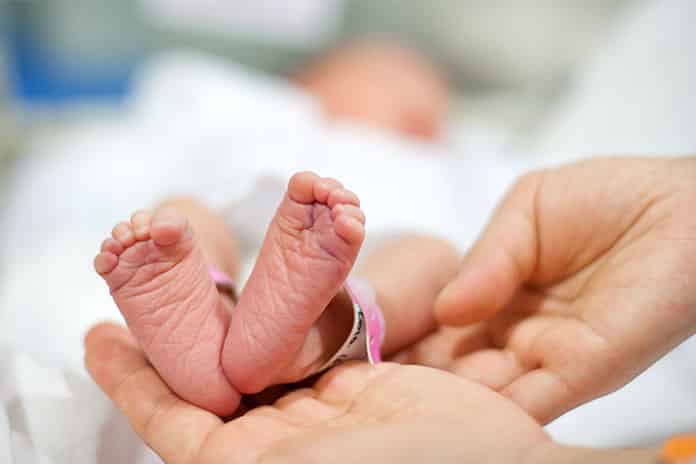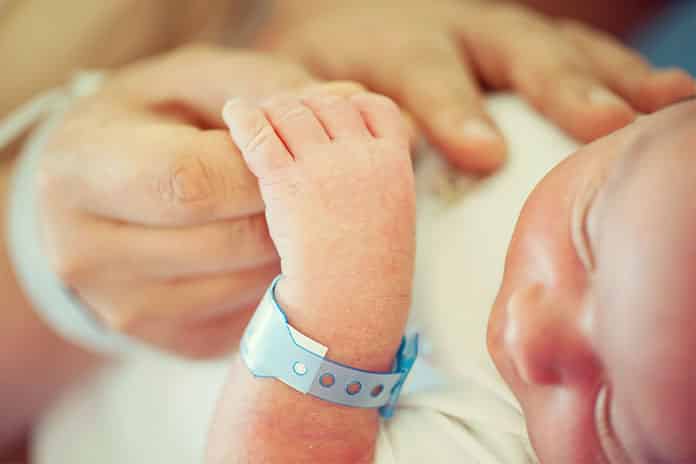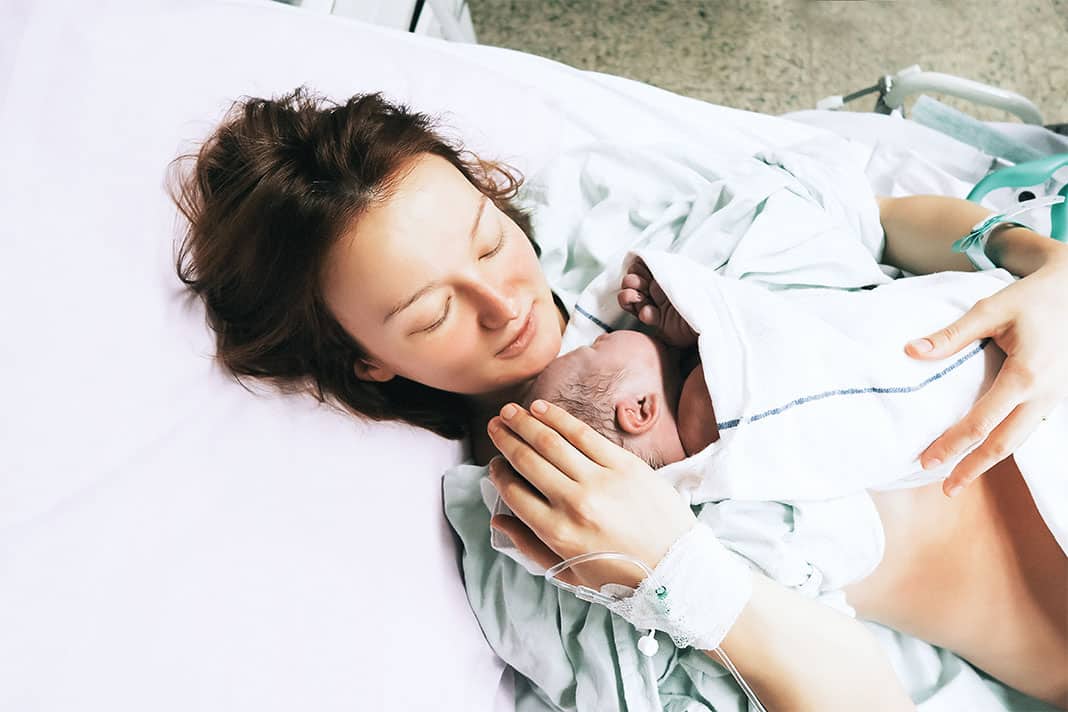How are women in the UK choosing to give birth and what options are open to mums-to-be? Mama reports on how and where you can have your baby.
Words Morag Turner
Did you have a ‘normal’ birth? How many of us have been asked that after we’ve had a baby? Most take the ‘n’ word as a stand in for ‘natural’ when discussing the delivery of babies, but what does it really mean? In reality ‘the norm’ for one woman can be totally different to her friend/sister/neighbour. Referring to one birth as more ‘normal’ than the other can lead to real feelings of upset and failure for new mums, who somehow feel they fell short of the mark by not ticking certain birth boxes.
So tricky a word is it that the Royal College of Midwives recently abandoned their eight year long ‘normal birth’ campaign. Since 2005 the RCM has run the initiative encouraging expectant mothers to give birth without medical interventions including epidurals, inductions and caesareans.
The midwifery trade union have instead started to use the term ‘physiological births’ to describe those without interventions as part of an overhaul of professional guidelines.
“There is a danger that if you just talk about normal births – and particularly if you call it a campaign – it kind of sounds as if you’re only interested in women who have a vaginal birth without intervention,” explains Professor Cathy Warwick, former RCM chief executive.
“What we don’t want to do is in any way contribute to any sense that a woman has failed because she hasn’t had a normal birth. Unfortunately, that seems to be how some women feel,” says Warwick.
But what exactly is the norm for mothers in the UK today? How and where are women giving birth and what options are open to mothers-to-be?
Let’s start with the stats. Last year nearly 700,000 babies were born in England and Wales, nine out of ten in NHS hospitals. Of those, 27% of babies were delivered by caesarean section, an increase of 3% on ten years previous. Of those who delivered vaginally, nearly 22% were induced and 12.9% experienced some kind of instrumental intervention such as forceps.
At first glance these figures may not mean a great deal, but on closer inspection, and when compared to the same data from previous generations, we can start to see a picture developing about women’s choices today and what services are available to them. For example, approximately 40% of mothers give birth without medical interventions now, compared to three decades ago when 60% did so.

According to Natalie Carter, consultant midwife at Chelsea and Westminster Hospital, the increase of choice within maternity services is leading to women making informed decisions.
“The recent Better Births report recommends that care becomes more personalised and individual to that woman and her family and that continuity of care from both midwives and obstetricians will help support improved outcomes,” says Carter. “Women have lots of choices regarding the care they receive from the NHS today, from place of birth to the type of pain relief they would like to use.” This may explain the increase in elective C-sections and the use of pain relief such as epidurals.
Indeed the NHS have been trialling a scheme giving mothers-to-be a personal health budget of around £500 to spend on things they believe will help them in pregnancy and birth such as reflexology sessions or hiring a birth pool. After an assessment of needs, the mother is told how much money is available to her and draws up plans for using the budget in ways that are intended to benefit her health and wellbeing. These plans are agreed with the primary care trust (PCT), after scrutiny for possible clinical and other risks. The money can be held and managed by a health professional, held by another third party on behalf of the patient, taken as a cash direct payment held by the patient or a combination of these. The scheme has yet to be rolled out, but the trial is a promising step towards empowering mothers.
Trish Nolan-Melfi is an experienced midwife who worked in the NHS for over 20 years before joining Private Midwives, an independent practice, in 2014. She noticed considerable changes in the attitudes of the women she sees now from when she first started out.
“Expectations have changed and rightly so,” she points out. ‘Women are now more educated and informed. They want to know what options are available to them and how to access those. Birth can be unpredictable, but regardless of the type of birth experience they are hoping for, the vast majority of women want to have some control over what happens to their bodies,” says Nolan-Melfi, who helps her clients deliver their babies at home and in hospital.
If you are willing to pay for an independent midwife – which costs in the region of £5,000 for antenatal care, postnatal care and birth support – the continuity of care is guaranteed. You will meet with your midwife through your pregnancy and, barring any extreme unforeseen circumstances, she will be present at the birth. A similar experience is offered by private hospitals, at varying costs. But what if this isn’t an option, how can you receive similar care on the NHS?

“I would encourage women to write to the Head of Midwifery at their local hospital and ask if they can see the same midwife at each antenatal appointment and even request she be there at the birth. It’s not impossible but you have to ask. Also, research how good the continuity of care is at your hospital and if it’s not as good as you might hope then consider another hospital. You have the right to choose,” says Nolan-Melfi.
While it is impossible to predict the exact labour and birth experience you will ultimately have, by making informed choices you can increase your chances of the delivery you want, such as a water birth for example. By researching the maternity services at your local hospital you can weigh up your chances of receiving the type of care you want. And it’s not as difficult to find that information as you might think.
The Care Quality Commission (CQC) monitors, inspects and regulates maternity services in England, from NHS and private hospitals to groups of independent midwives, and CQC inspection reports on these services are available to the public.
The CQC’s recent survey of over 1,000 women who had given birth in England in the last three years found that 40% either weren’t aware or didn’t feel they had a choice about their birth hospital. Of those who picked their hospital 53% stated this was a ‘very important’ decision, however 57% spent less than an hour choosing theirs, suggesting a lack of awareness about the amount of information that is available to help make an informed choice.
“Pregnancy is a very exciting time but it can also be daunting and many women feel at their most vulnerable,” says Heidi Smoult, Deputy Chief Inspector of Hospitals at the Care Quality Commission. “Depending on their needs, women may have the option to have a hospital, birthing centre or home birth. It’s vital they know they have a choice. While advice from family and friends can be useful, it’s important expectant parents know there’s free, independent information available.”
The CQC found the top influencing factors affecting where women choose to give birth were the hospital being close to home (65%), followed by hospital cleanliness and safety (55%), a good reputation (39%) and caring staff (36%). CQC inspection reports include detailed information asking these key questions and the research found that of those who did use the inspection reports, 95% found them helpful in informing their birth choice decision.
There is a huge variation in maternity services across England. In the most recent round of inspections 5% were found to be inadequate, not offering the standard of care the inspectors would expect and needing make changes quickly; 52% had room for improvement; 38% were good and 5% were outstanding. By reading the reports you can find out information specifically relating to nearby maternity services and see what rating they were given.

Smoult is extremely keen to encourage women to contact the CQC to share their birth experience, good or bad, so that others can benefit from that information when making their choices.
“The information we receive from women about their experiences is an essential part of us reaching a judgement about a maternity service. Women can share their experiences of care directly on our website: cqc.org.uk/yourbirthplan’’ she says. “It is essential that women are fully informed about all the risks and benefits relating to the choices they have available to them in their pregnancy, birth and postnatal period to allow them to make an informed choice.”
Advice is constantly changing and being updated, so it can seem overwhelming when you go from looking at that positive pregnancy test to deciding on what type of birth you would ideally like to have and who you want looking after you during it.
For example, in 2014 the National Institute for Health Care and Excellence (NICE) published guidelines saying that women with uncomplicated pregnancies (about 45% of the total) were better off in the hands of midwives than hospital doctors during birth. For these low-risk mothers-to-be, giving birth in a traditional maternity ward increased the chances of surgical intervention and therefore infection, the regulator said.
Hospital births were more likely to end in cesarean sections or involve episiotomies, a government financed 2011 study carried out by researchers at Oxford University showed.
The risk of death or serious complications for babies was the same in all three settings, except in the case of first-time mothers where home births run a slightly increased risk.
While these stats (along with the other million pieces of information that mums-to-be can find with a quick Google search) make interesting reading, they are only relevant if taken in the context of your own personal set of circumstances. A home birth may well be off the cards if you have any complications.
“Ultimately the best people to talk to are the medical team who know you,” advises Nolan-Melfi. “There is no such thing as a ‘normal’ birth, but there is the best one for you and your baby.”
For more information visit:






NO COMMENT